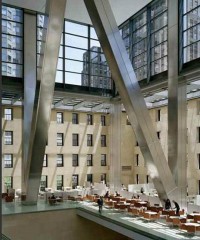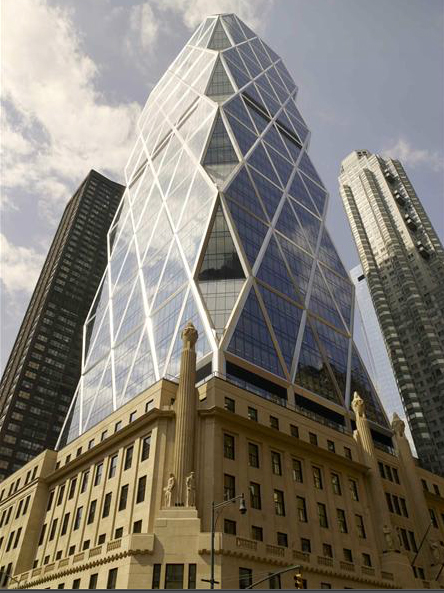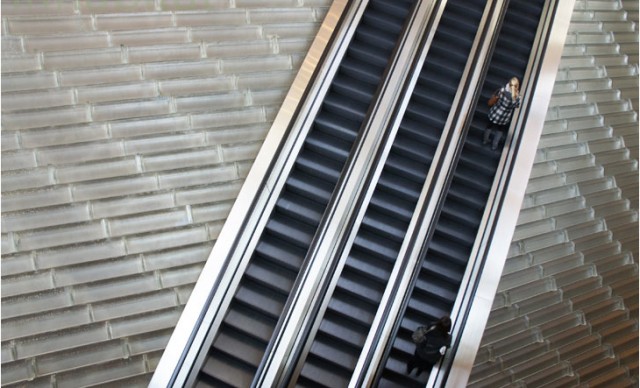Image: Foster+Partners
The Hearst Tower, designed by the acclaimed British architect, Norman Foster, is a fairly recent addition to the NYC skyline. If you are not yet familiar with Foster’s work, you may want to check out his other projects including the Reichstag in Berlin, housing the German Parliament; the Great Court at the British Museum in London; and the HSBC Main Building in Hong Kong. As you scroll through Foster’s expansive list of projects, you may notice a pattern beginning to emerge – glass, transparency, geometric shapes curving and twisting – all coalescing into Foster’s unique style of modernity.
In the design of the Hearst Tower, Foster merges the old and new, creating a distinctive 46-story gleaming glass tower atop the Hearst building’s original stone base. The original Hearst building, commissioned by newspaper magnate William Randolph Hearst and designed by Joseph Urban, is a six-story 1920s Art Deco building that served as the New York headquarters for the Hearst Corporation. From the façade of the building, sculptural figures representing various aspects of the Arts, Commerce, and Industry celebrate the dynamism of the city.
The Hearst building was reportedly landmarked in 1988, but the original building plans called for a tower above the structure. With approval to construct a tower above the Hearst building, Foster reconstructed the interior of the original building while maintaining the historic façade. The new interior greets the visitor with a dramatic six-story lobby and the sound of cascading water. The water feature is part of the “Ice Fall” installation, a waterfall that flows besides the escalators.
 Right Image: Inhabitat | left Image: Foster+Partners
Right Image: Inhabitat | left Image: Foster+Partners
Beyond its aesthetic attributes, the Hearst Tower, constructed in 2006, is a model of sustainability. The building was the first skyscraper in NYC to receive the U.S. Green Buildings Councils Leadership in Energy and Environmental Design (LEED) Gold Certification. The building was designed to consume 26 percent less energy than a traditional building. The rooftop features a rainwater collection system. Quite impressively, 90 percent of the steel used is recycled, and the tower’s exterior triangular frame further saves about 2,000 tons of steel.
The Hearst Tower is located at 300 West 57th Street, near Columbus Circle in Manhattan.
To learn more about Norman Foster, see the documentary: How much does your building weigh, Mr. Foster?

